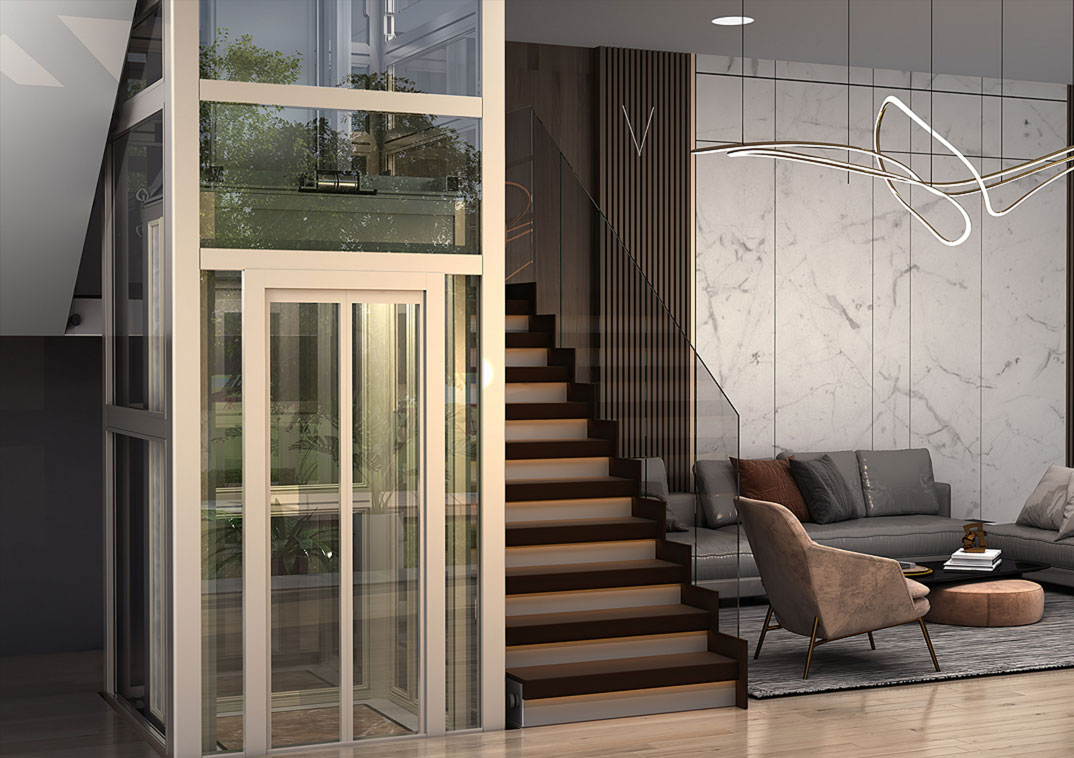One of the most common concerns for homeowners considering a villa elevator (also known as a home elevator or residential elevator) is noise—especially when the elevator is installed in a private living space such as a family home, near bedrooms, or in a quiet residential environment. Many people wonder: Is the noise from villa elevators loud? Can it be used at night without disturbing others? The good news is that modern villa elevators are designed to be quiet and unobtrusive, making them suitable for use at any time, including at night.
1. Modern Elevators Are Built for Quiet Operation
Unlike older industrial elevators or hydraulic systems that can produce loud pumping or mechanical noises, today’s villa elevators use advanced technologies such as screw-driven, gear-driven, or machine-room-less (MRL) traction systems, all of which operate very quietly.
Screw-driven elevators are among the quietest options. They use a rotating screw mechanism to move the cabin smoothly and with minimal noise—typically between 45 to 55 decibels (dB), which is comparable to a quiet conversation or a refrigerator humming.
MRL traction elevators are also very quiet, with noise levels usually under 60 dB, similar to normal indoor background noise.
These sound levels are low enough that the elevator can be used at night without waking sleeping family members or disturbing household peace.
2. Sound-Insulating Materials Reduce Noise
Manufacturers of villa elevators use sound-absorbing materials in the cabin walls, doors, and guide rails to further reduce noise. Some models include:
Double-layered or insulated cabin panels
Rubber dampers on guide shoes
Soft-start and soft-stop motor controls that eliminate sudden jerks and loud braking sounds
These features ensure that the movement is not only smooth but also virtually silent in most cases.
3. No Machine Room = Less Noise
Unlike traditional elevators that require a separate machine room with loud motors and pumps, most villa elevators are machine-room-less (MRL). The motor and drive system are compact and integrated into the top of the elevator shaft, eliminating the need for a noisy mechanical room. This design significantly reduces both vibration and sound transmission into living areas.
4. Installation Quality Matters
Even the quietest elevator can become noisy if installed improperly. Poor alignment of guide rails, loose components, or inadequate sealing between the shaft and rooms can amplify sound. That’s why it’s essential to:
Choose a reputable supplier or installer
Ensure the shaft is properly insulated (especially if adjacent to bedrooms)
Use acoustic sealing around doors and openings
A well-installed elevator should produce only a soft whirring or humming sound—barely noticeable in normal home environments.
5. Can It Be Used at Night?
Yes, villa elevators can absolutely be used at night. Thanks to their quiet operation, many homeowners use them without disturbing others, especially in homes with elderly or disabled family members who may need to move between floors late at night.
For example:
An elderly parent going to the bathroom at 2 a.m.
A caregiver checking on a family member
Someone carrying laundry or groceries after dinner
The convenience and safety of having an elevator far outweigh the minimal noise it produces.
6. Noise Comparison with Everyday Sounds
To put it in perspective:
Normal conversation: 60 dB
Refrigerator hum: 45 dB
Whisper: 30 dB
Villa elevator (modern type): 45–58 dB
This means the elevator is no louder than common household appliances like a dishwasher or washing machine—and often quieter.
The noise from modern villa elevators is not loud—in fact, it’s typically very quiet and unobtrusive. Thanks to advanced motor technology, sound insulation, and compact designs, these elevators can be used safely and comfortably at night without disturbing sleep or daily life. For families with elderly members, mobility challenges, or multi-story homes, a quiet villa elevator offers both convenience and peace of mind, blending seamlessly into the home environment. When choosing a model, look for low-decibel ratings and high-quality installation to ensure the quietest possible experience.












